Pennsylvania is rife in human history – if you’re in Pennsylvania, consider yourself surrounded with nearly 20,000 years of it! So, it should come as no great surprise that its 121-state park and over 2 million-acre forest system, administered by the Department of Conservation and Natural Resources, are steeped in both natural and human history.
As DCNR’s Cultural Resources Program Coordinator, a new addition to our agency, I get a front row seat to see the buildings, artifacts, sites, and landscapes our forebears left behind to help us interpret the past. But that premier access, front row seat can be had by anybody willing to step, roll, or scroll outside to one of their nearby parks or forests.
This June, Pennsylvania will be celebrating over 400 years of its African American heritage, as well as Juneteenth National Independence or Freedom Day on June 19th. June is also Great Outdoors Month.
One way to expand your experience with African American heritage in Pennsylvania is simply to opt outside at one of our parks featuring the sometimes told, and sometimes still to be told stories of the African American experience.
While not exhaustive or comprehensive by any means, below are some of the historical sites and places to visit in our parks that feature African American history as part of their many offerings. Most of these places involve ongoing research initiatives with partner institutions or DCNR-sponsored research as so much of our African American history remains underrepresented in written history.
If you’re looking to connect with our shared heritage, I’d look to your local state park or forest and see what you find. But, if you’re interested in experiencing African American heritage and its time depth in our public lands, this short list below is where I’d start!
Caledonia State Park: Thaddeus Stevens’ Caledonia Iron Furnace Monument (Adams County)
Caledonia State Park’s Thaddeus Stevens’ Iron Furnace Monument is part of the National Park Service’s National Underground Railroad Network to Freedom and was re-constructed from the original iron furnace as a monument to Stevens and his significant role in abolitionism.
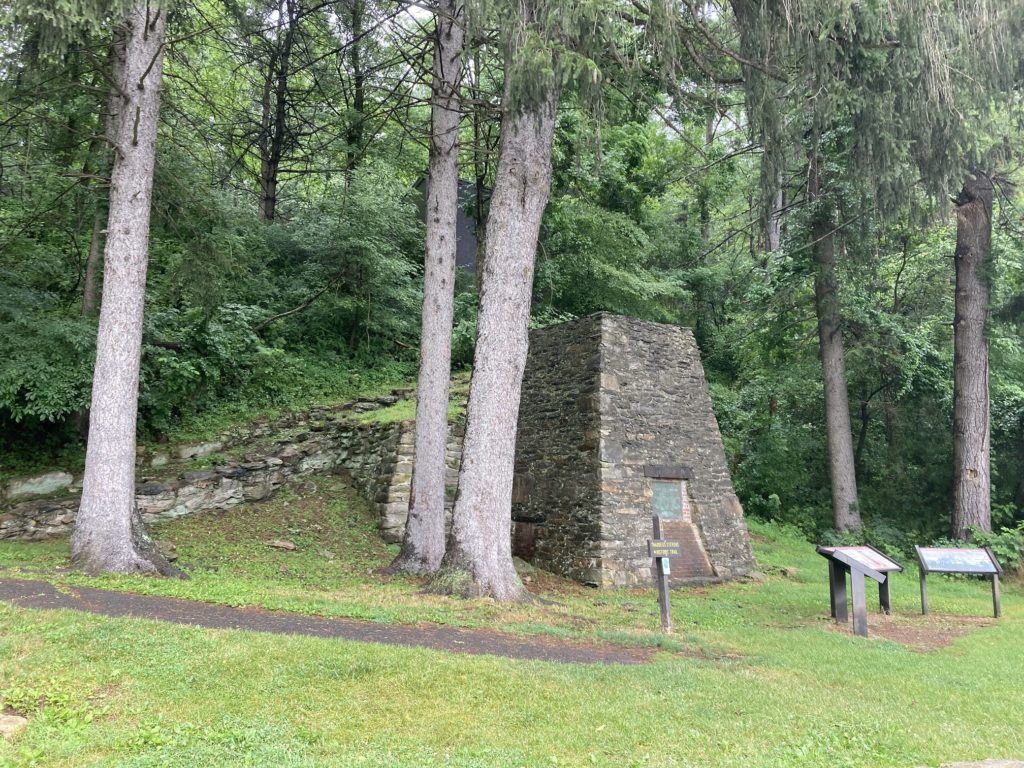
As Stevens fought for political freedoms, his iron furnace foreman at Caledonia Iron Works, William Hammett, conducted freedom seekers to safety along the deliberate and organized network of the Underground Railroad. Because of its ties to Stevens, Caledonia was burned and pillaged by General Early during the Gettysburg Campaign.
Today, the monument sits near the entrance to the park, right off US 30 in Fayetteville, Pennsylvania.
French Creek State Park: Six Penny Creek Community (Chester and Berks Counties)
Along French Creek State Park’s Six Penny Creek, evidence of a free antebellum African American community with ties to the Underground Railroad and the charcoal industry exists within our modern-day park lands!
Collier huts and charcoal lands, often overgrown during the years in between cutting down trees to burn for charcoal, provided both refuge and opportunity to those seeking freedom from slavery and slave catchers.
Dr. Benjamin Carter, Muhlenberg College, and his students are currently investigating the community’s ties to the Underground Railroad and industry on state lands using a variety of methods to include survey and analysis of Light Detection and Ranging (LiDAR) data!

Laurel Ridge State Park: Brown Family Cemetery/Laurel Hill Community (Cambria, Fayette, Somerset, and Westmoreland Counties)
Tucked into the hills above Johnstown, near the northern end of the Laurel Highlands Hiking Trail in Laurel Ridge State Park, the Brown Family Cemetery stands as a remaining vestige of the Laurel Hill Settlement.
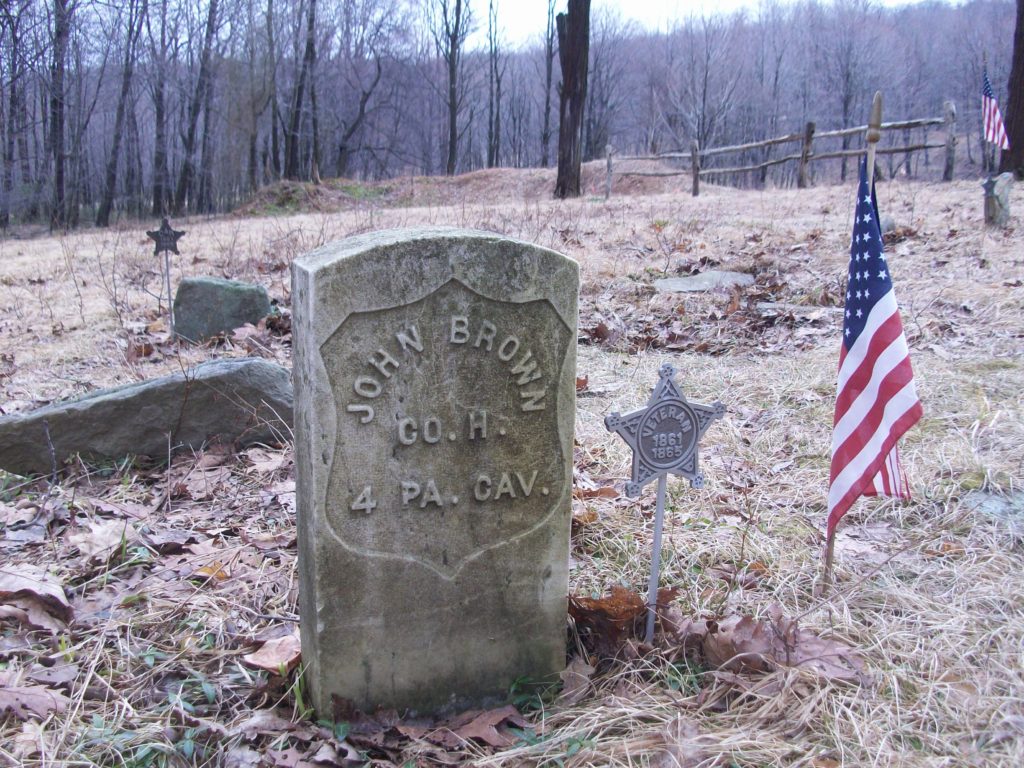
Though much remains to be discovered about this 18th and 19th century African American settlement, family history suggests that members emigrated from Virginia to escape slavery, finding refuge amongst the densely forested hills above town.
Multiple members of the Brown and Smith families served their country as part of the United States Colored Troops (USCT) during the Civil War and now lie memorialized in the family cemetery.
Penn Roosevelt State Park: CCC Company 361-C Camp S-62 PA (Centre County)
Penn Roosevelt State Park is home to not only one of our African American Civilian Conservation Corps (CCC) camps, but also the still functioning and handcrafted infrastructure they built! From 1933 to 1935, Company 361-C, S-62 PA operated as a segregated camp for African American CCC enrollees.
During their time at the camp, the young men of the CCC built their living quarters, camp facilities, forestry buildings, a recreational area that included a dam and reservoir for swimming, a beach, and camp sites.
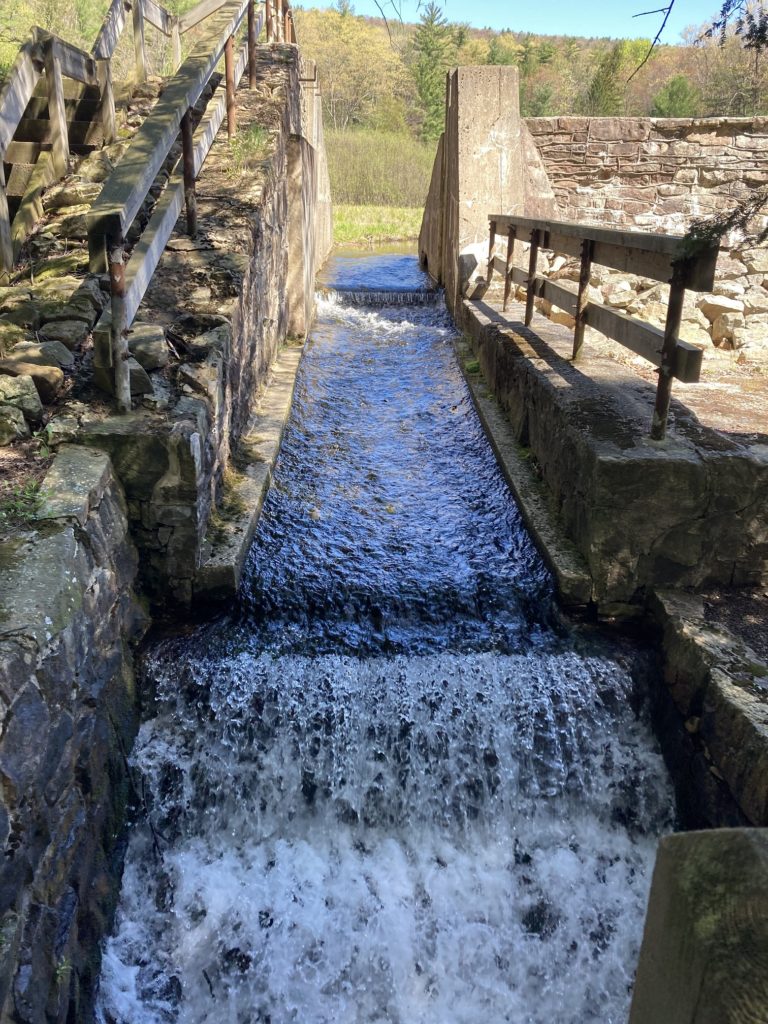
They planted the trees you see today to reforest a largely denuded landscape resulting timbering by the 19th century iron industry. They even built the forest roads bringing you to this hidden gem today!
DCNR staffer Paul Fagley’s deep dive into the historic records of the CCC and its African American camps in PA have built a strong foundation for ongoing archaeological investigation into this park’s CCC camp by DCNR’s PA Outdoor Corps’ (PAOC’s) Cultural Resources Crew (CRC), a joint venture with the Student Conservation Association. This ongoing exploration seeks to uncover the lived experiences of the African American enrollees of the CCC.
Pymatuning State Park: CCC Company 2312-C Camp NP-11 PA (Crawford County)
On the western side of the state, you’ll find Pymatuning State Park, also home to one of our African American CCC camps from 1935 to 1938, Company 2312-C, NP-11 PA operated as a segregated camp.
The CCC corpsmen took on the typical CCC tasks of planting trees, building roads and structures, constructing their own camp buildings, but the young men of this camp notably served the public fighting forest fires and engaging in emergency flood relief and rescue work in Pittsburgh and Johnstown.
This spring and fall, the PAOC’s CRC is working with park staff to expand ongoing research into the lives of the young Black men living at the segregated CCC camp.
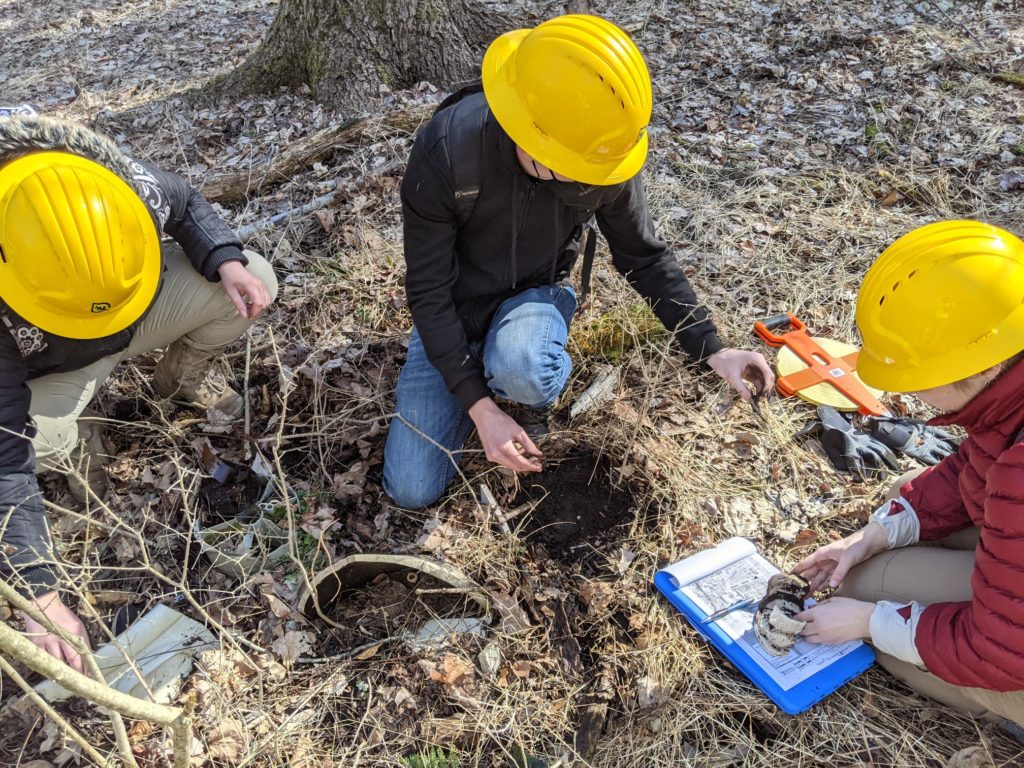
When visiting our historic sites, please keep in mind some of our favorite, tried-and-true conservation and preservation ethics!
- Travel and recreate on durable, prepared surfaces – our trails and designated recreational spaces!
Please stick to our marked trails for lots of reasons, least of which because it helps us to preserve our shared heritage in sight of, but maybe not on, our invaluable and irreplaceable historic resources.
- Dispose of waste properly – take out what you brought in.
Please don’t leave modern waste on our historic sites. It takes away from the historical experience and endangers our wildlife.
- Leave what you find – every artifact and the context in which we find and situate it, tells a story.
If you take pieces away with you, we lose part of the important stories these historic places tell… and how to share it with others. For most historic or archaeological sites in our parks and forests, we’re looking at such a small sample of what was there, that losing even one more artifact compromises our ability to understand what the bigger picture once was.
- Be considerate of others – help us to conserve and preserve our places for the benefit of all peoples!
Keep in mind that these historical places represent different lived experiences and, while they may not be representative of your experience, they are part of our shared heritage and deserve to be conserved for present and future generations.
Today’s Guest Contributors are Angela Jaillet-Wentling, M.A. RPA (PA DCNR Cultural Resources Program Coordinator) with Ashley Respet (PA DCNR Environmental Education Specialist, Laurel Hill State Park Complex).
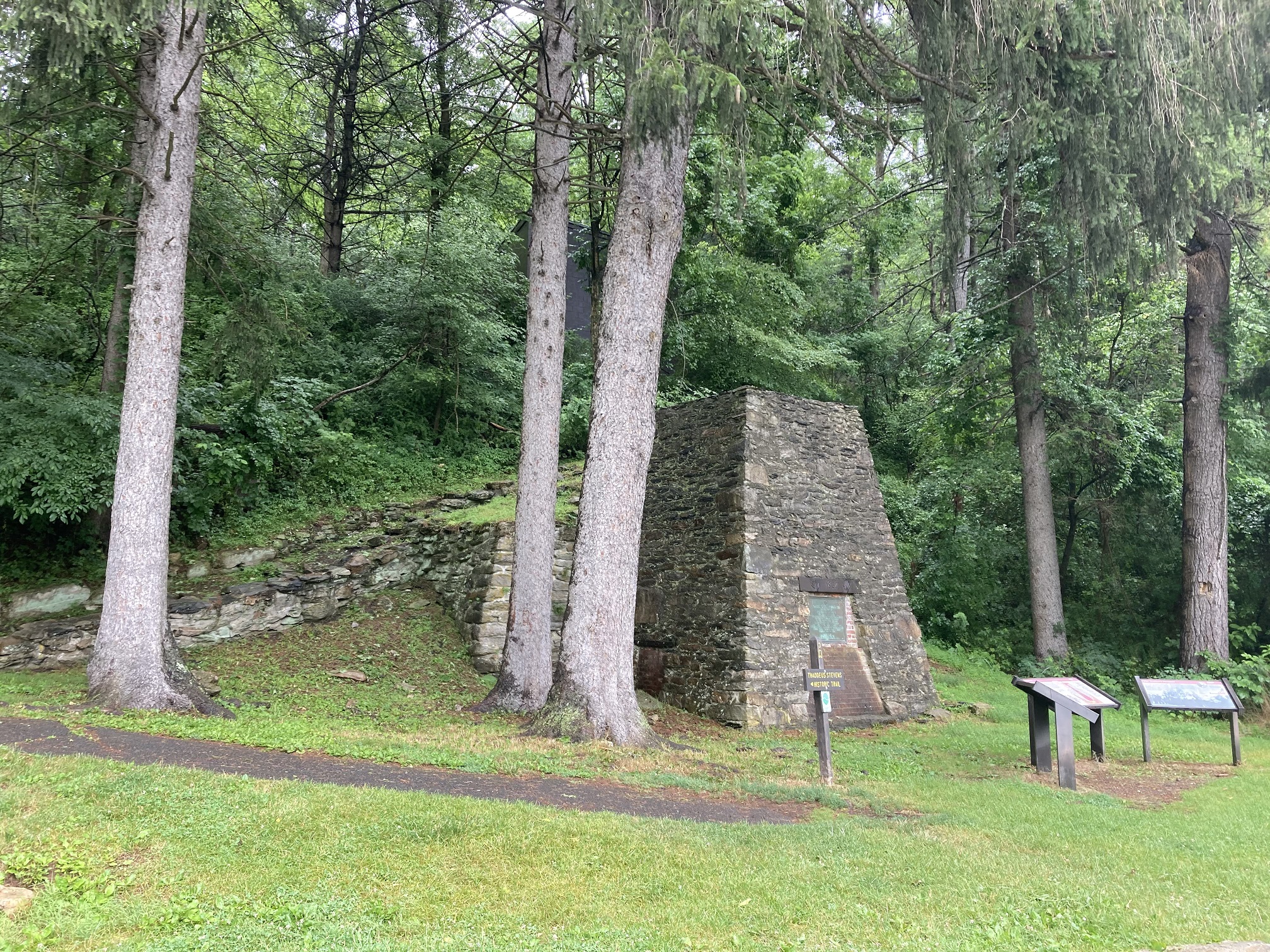
Fascinating information! Thank you for sharing it with us.